
Shaka Triad, Courtesy of the Official Horyu-ji Temple
Japanese artists and people have found inspriation in gold for more than a thousand years. Gold is one of the archipelago’s greatest natural resources and a source of profound meaning in art and symbolism.
The famous travels of the merchant Marco Polo told the world of the rich depths of gold and its abundance in Japan. The islands are bountiful in the ore, sent to the surface by volcanic movement beneath the sea; without the need for excavation, gold appears in veins and in the riverbeds since ancient times. The untarnishable and rare metal is a part of religious worship, used to gild Buddhist statues, relics, and temples in plate or leaf form. Even prior to Polo’s arrival, gold was prized for its eternal qualities among ancient rulers who were entombed in kofun.
The Kyoto-Nara region is known for a great tradition of metal arts. At Horyu-ji Temple in Nara is the Shaka Triad. Hidden away amongst the historical treasures, it is cast bronze and gold leaf created in the seventh century. The golden skin that remains on the figure of Shakyamuni Buddha and his attendants still glows like a flaming sun.
Kyoto native metal artist Hiraku Sudo mastered his techniques by reviving declining metal ornaments from temples, breathing new life and preserving their historical integrity. Sudo’s unique artworks take on a form mimicking bejeweled fabrics; he uses metal and gold in layers to resemble silken threads.
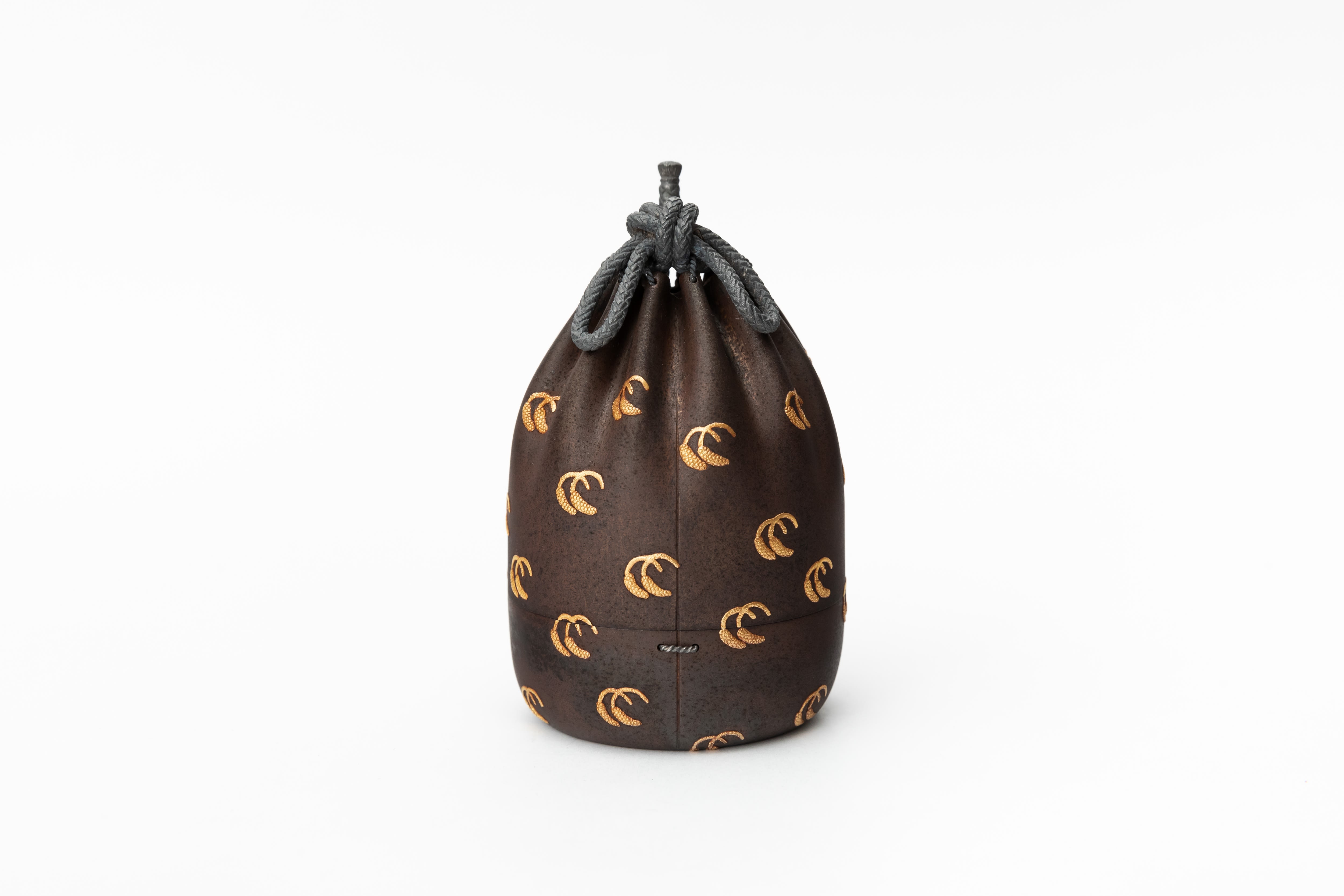
Hiraku Sudo, Kōryō "Ephemeral Glory," 2024 (C27873)
In Kyoto, the gilded reliquary at the ‘Temple of the Golden Pavillion’ known as Kinkaku-ji is of great importance. The architecture of the temple features the crest of the Japanese imperial family, the phoenix, in gilded bronze roosting atop the temple roof.
The same phoenix is forged into the headpiece of Junko Narita’s ningyo, Prayer for a Thousand Years. Narita donned her head with the phoenix wrought in metals and gold created during the Kamakura period (1368–1644), and she drew together fine antique silks from Ming China and Edo Japan for her garb.
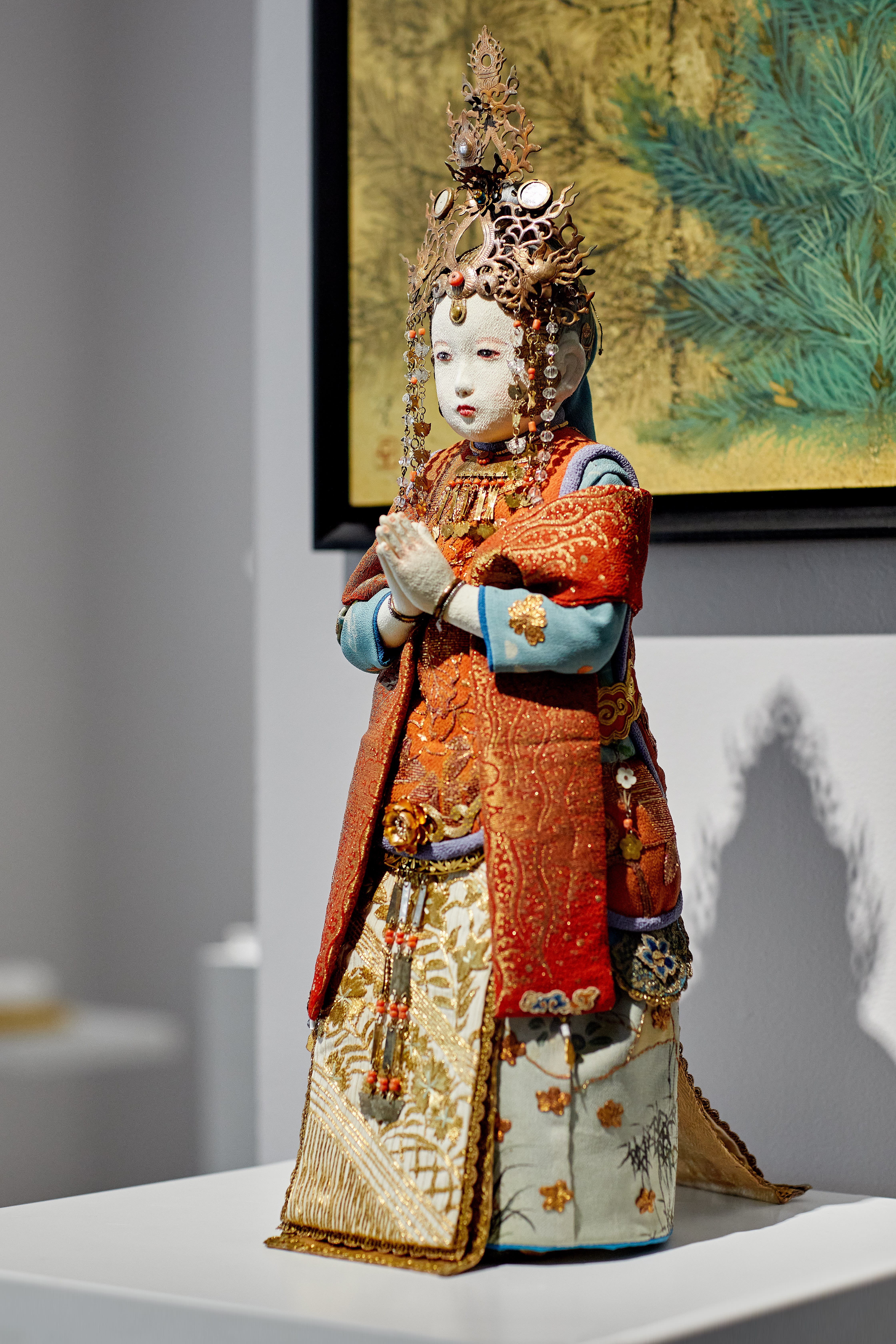
Junko Narita, Doll, "Prayer of a Thousand Years,” 2023 (B28763) Courtesy of Jòseh Alva-Vega
One devotee to gold was the mighty Toyotomi Hideyoshi, who made a spectacle of its ever-glowing power. Hideyoshi unveiled his gilded tea room—lined with gold leaf—to host the emperor at the Kyoto Imperial Palace in the sixteenth century during the height of Japanese tea culture. Hideyuki Fujisawa’s Gold Tenmoku Lacquer Set recalls the gold-papered walls of the treasured chatshitsu. Unlike the commonly used ceramic tea bowl, Fujisawa’s artwork is made from a wooden core and urushi lacquer. The tenmoku tea bowl shape and stand is intended for the most special of guests.
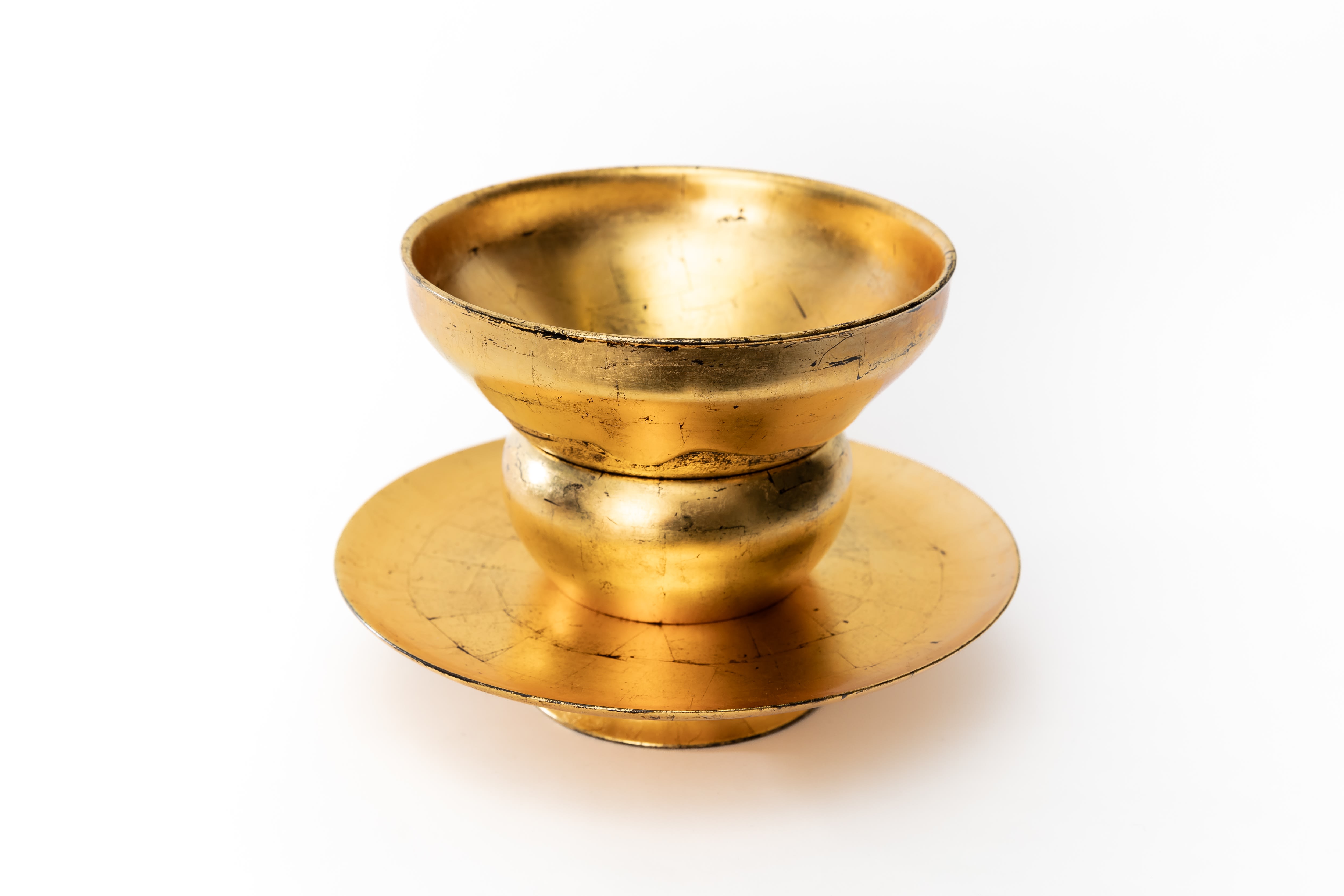
Hideyuki Fujisawa, Gold Tenmoku Lacquer Tea Bowl [Set], 2025 (C28802)
There is no guest more venerable than the emperor. Metal artist Hirotomi Maeda presented a piece created in gold and silver-alloy to Naruhito at his accession in 2019 with tremendous honor. These vessels are echoes of the ancient Mesopotamian civilization, when metal was wrought without machinery. Maeda's technique begins with a flat sheet—gold, silver, and copper; a blank canvas—on which he inlays complex interwoven patterns.
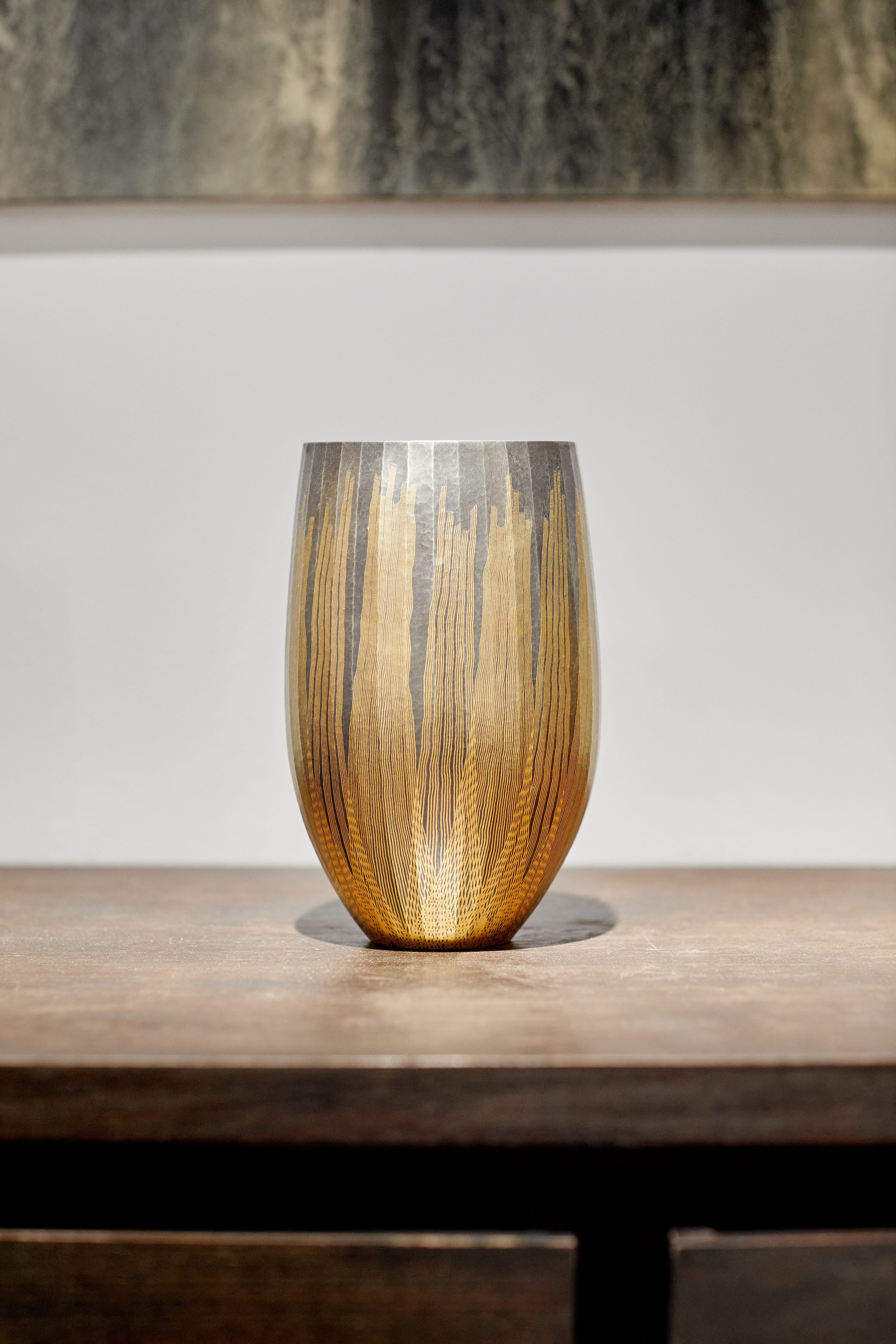
Hirotomi Maeda, Gold and Silver Vessel, 2024 (C28826) Courtesy of Jòseh Alva-Vega
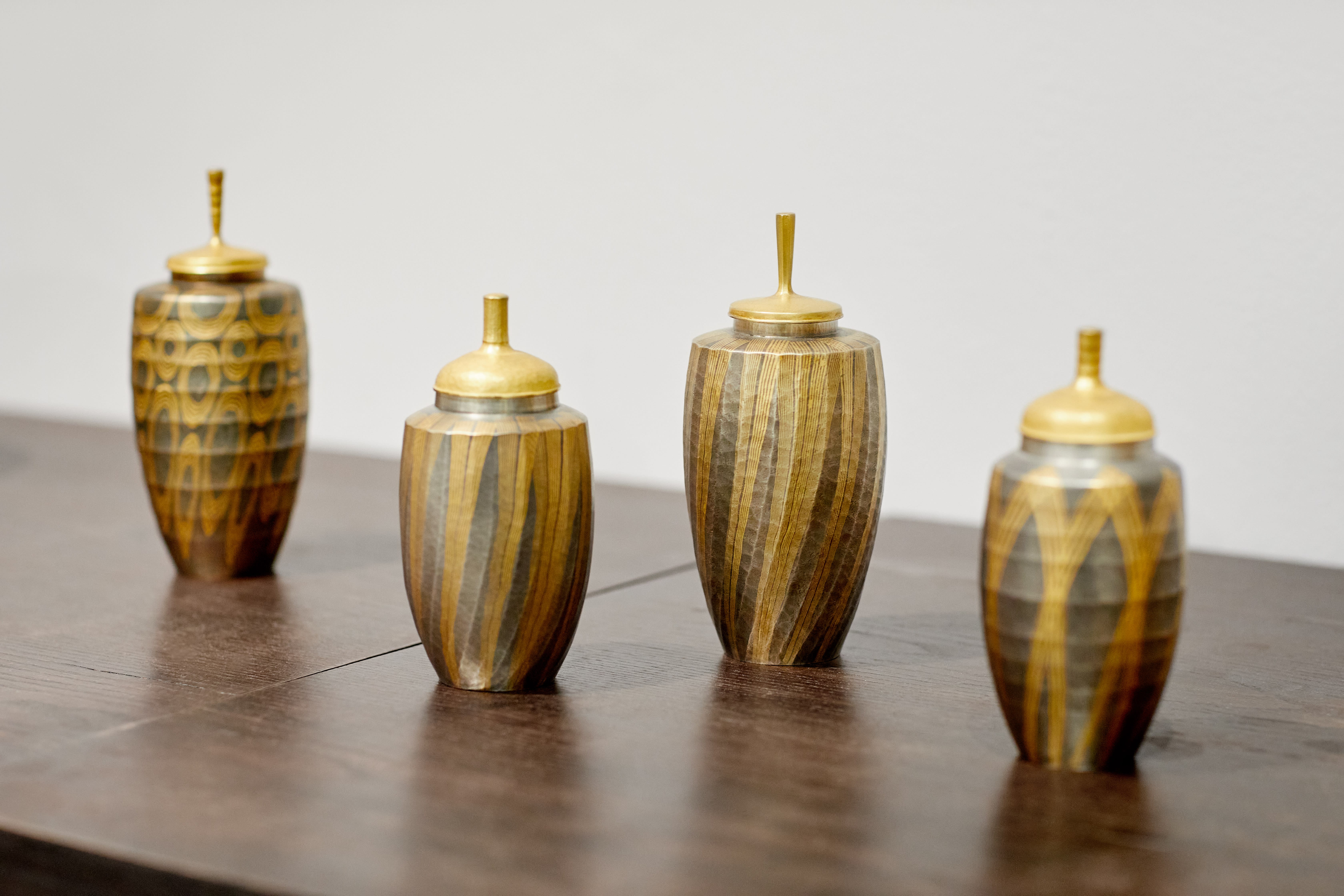
Hirotomi Maeda, Lidded Gold and Silver Vessels, 2022 & 2023 (C28822; C28823; C28824; C28825) Courtesy of Jòseh Alva-Vega
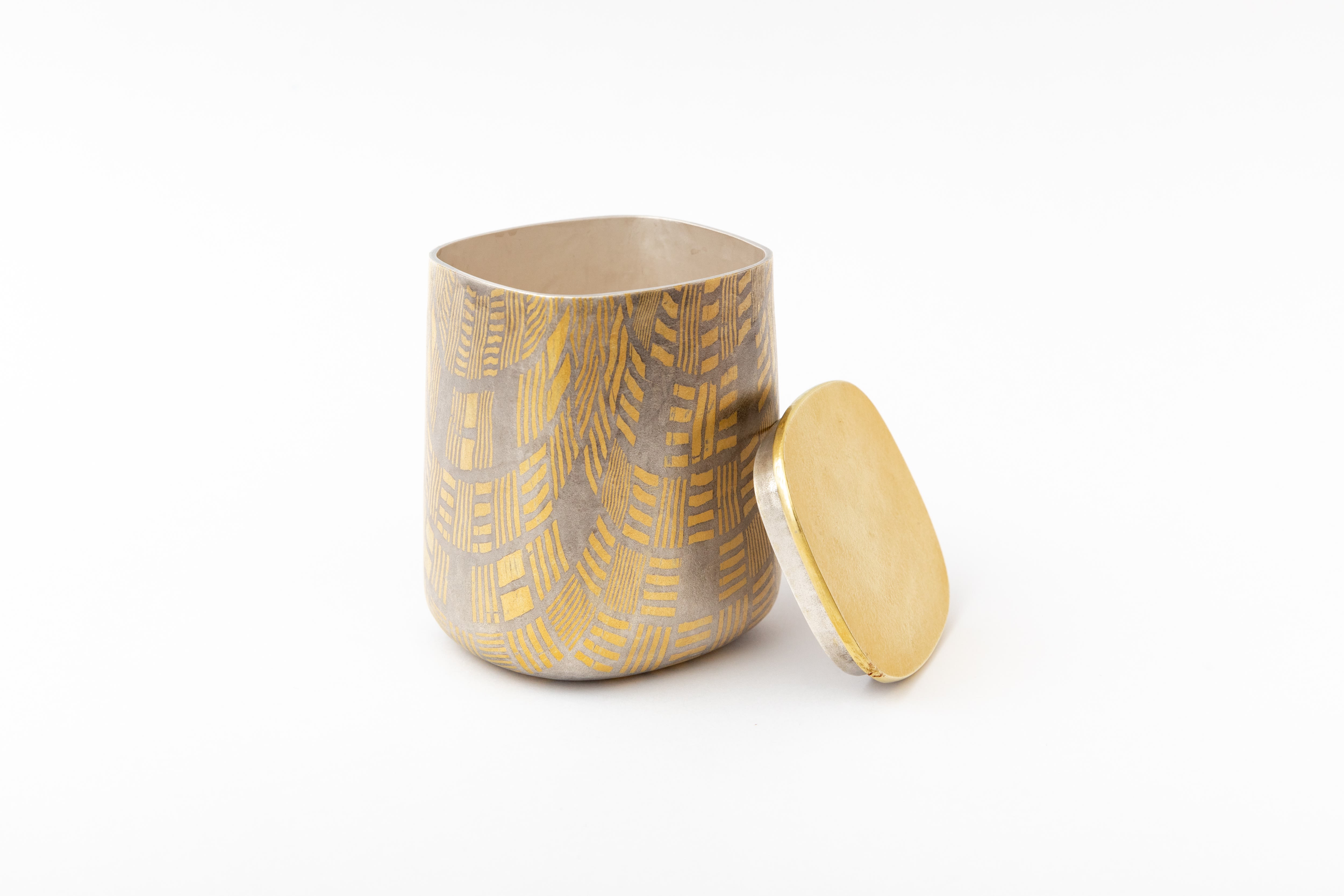
Hirotomi Maeda, Gold and Silver Tea Caddy, 2022 (C24504P)
Each strike of his hammer is calculated and intentional, advancing methodically towards the final three-dimensional geometric shape. His latest series is conceived especially for the city of New York: Clouded Skyscraper is a reminder of the green verdigris patina of the Statue of Liberty and the chisel-engraved spirals evoke classical Art Deco facades of famous buildings like the Chrysler.
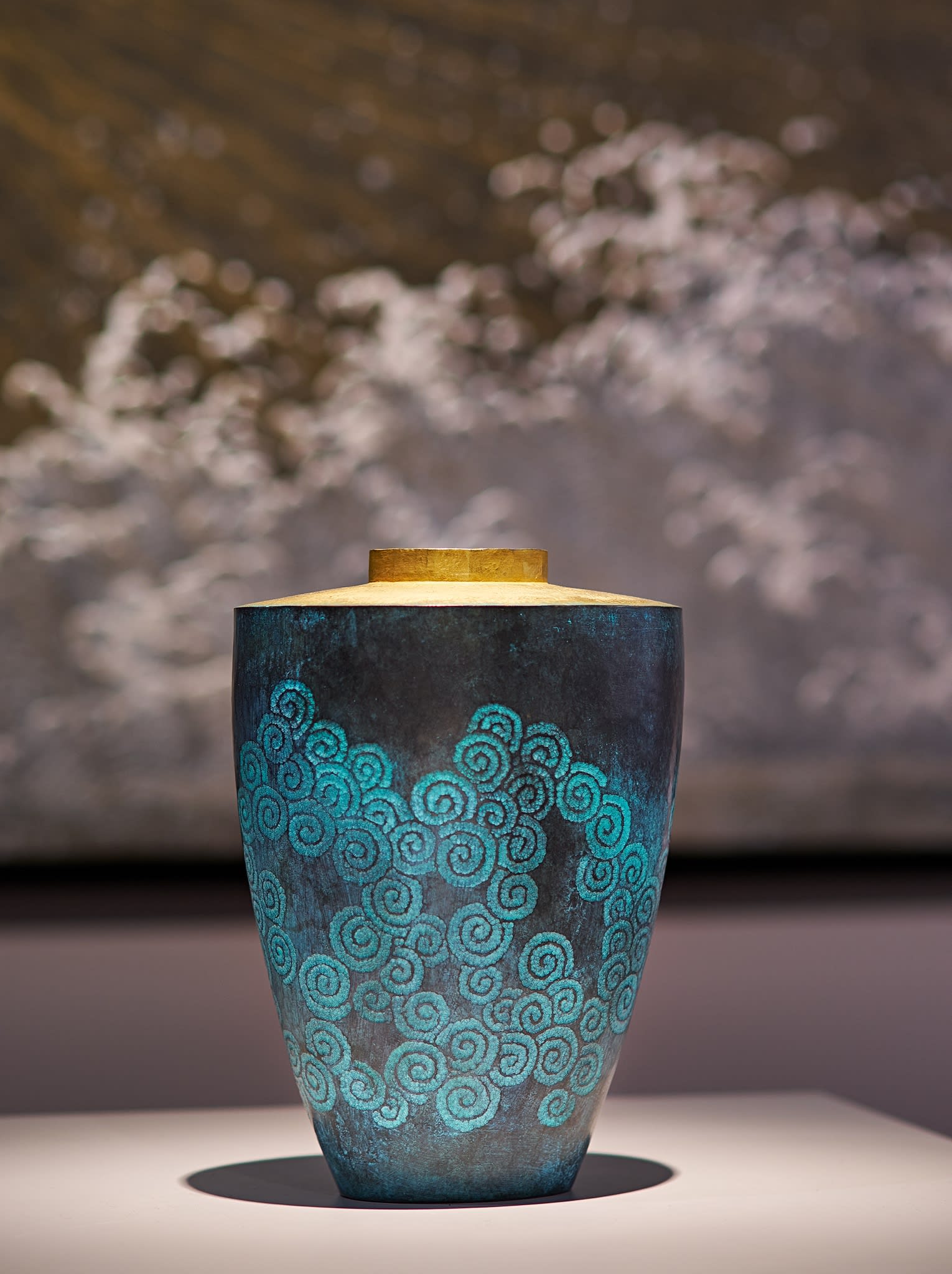
Hirotomi Maeda, Clouded Skyscraper, 2025 (C28827) Courtesy of Douglas Dubler III



